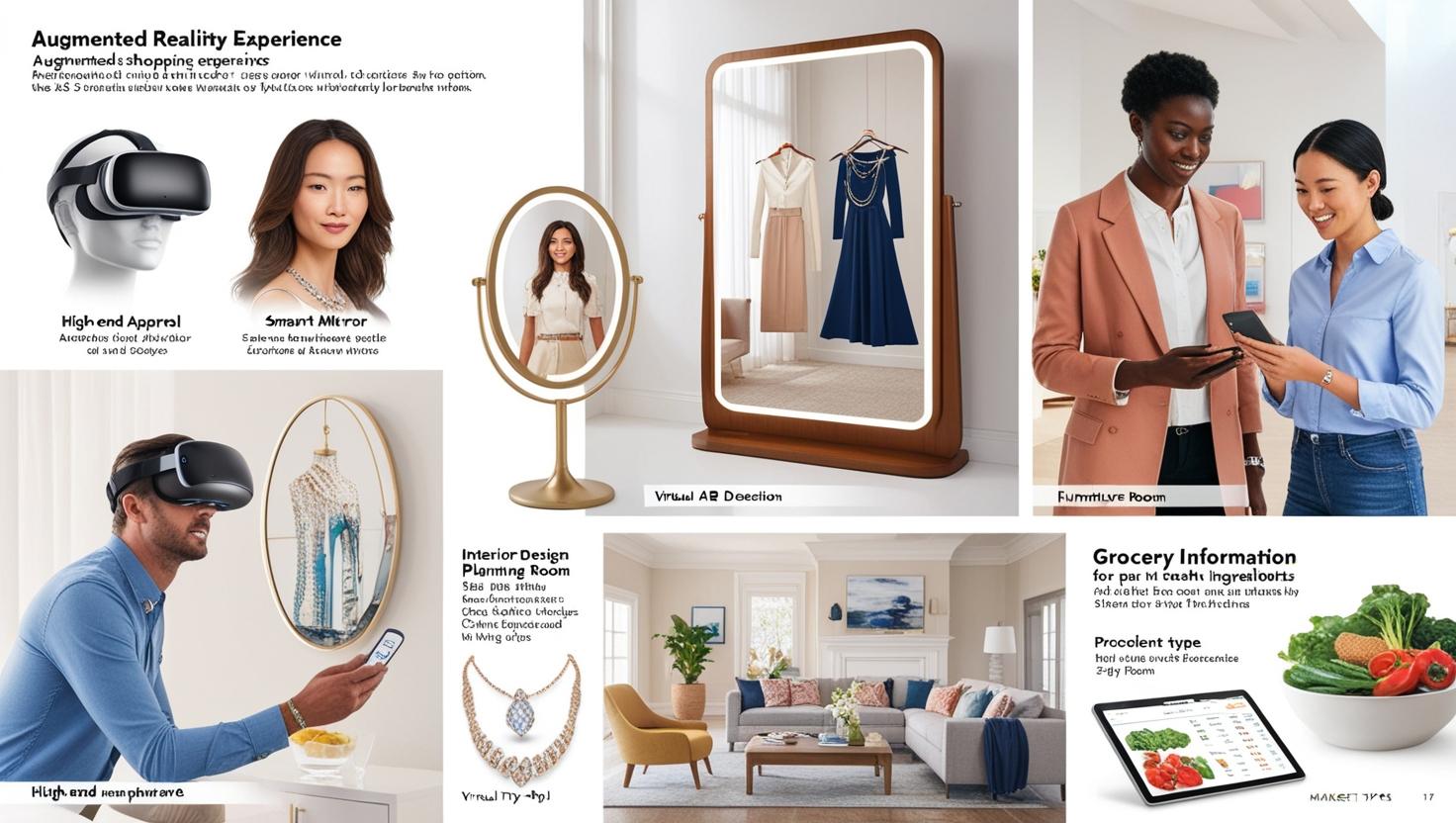The global Augmented Reality (AR) shopping market is undergoing a transformative surge as retailers across industries adopt immersive technologies to redefine consumer engagement. With shoppers increasingly seeking interactive, convenient, and personalized experiences—particularly in the e-commerce and hybrid retail sectors—AR is fast becoming a competitive differentiator. By allowing consumers to visualize products in real-world contexts before purchasing, AR bridges the gap between physical and digital shopping, creating new avenues for brand loyalty, sales conversion, and customer satisfaction.
The Rise of Immersive Retail: From Novelty to Necessity
Once considered a futuristic gimmick, AR in shopping has evolved into a strategic necessity. The technology enables customers to virtually try on clothes, test makeup, see how furniture fits in their space, or explore product features in 3D—all from the comfort of their smartphones or in-store kiosks. As consumer expectations for experiential retail rise, AR delivers an engaging and functional alternative to traditional shopping, especially in sectors like fashion, home décor, electronics, and beauty.
Retailers from global giants to emerging DTC (direct-to-consumer) brands are integrating AR into mobile apps, websites, and physical stores. The results are measurable: higher dwell times, lower return rates, and increased buyer confidence. This shift is part of a broader trend where digital innovation meets behavioral insight to create personalized, data-driven customer journeys.
E-Commerce Acceleration and Contactless Shopping Demand
The COVID-19 pandemic significantly accelerated the adoption of AR shopping technologies, as lockdowns and safety concerns shifted consumer behavior toward digital-first experiences. AR filled a crucial gap, enabling customers to make informed purchase decisions without physical interaction. The result has been a permanent change in how people shop online, with AR features now expected rather than appreciated.
Retailers responded by integrating AR into product pages—offering 360° views, virtual fittings, and “view-in-room” tools. Tech-savvy consumers, especially Gen Z and Millennials, have embraced these experiences, pushing brands to adopt AR not just as a novelty, but as a core component of their omnichannel strategy.
AR Shopping Use Cases Across Industries
Different retail segments have found unique applications for AR that enhance their offerings. In fashion and apparel, virtual try-ons allow users to see how clothes fit without a dressing room. Beauty brands use facial recognition AR to let users test lipsticks, foundations, and eyeliners in real time. Furniture retailers, like IKEA, enable users to place 3D models of sofas and tables in their homes to evaluate size and aesthetics.
Even automotive and electronics companies are leveraging AR for product exploration—allowing customers to open car doors, rotate gadgets, and explore features interactively. These applications not only drive engagement but also reduce return rates and increase average order values.
Market Growth and Technological Ecosystem
The augmented reality (AR) shopping market is expected to reach USD 11.6 billion by 2028 from USD 3.4 billion in 2023, at a CAGR of 28.0% from 2023 to 2028 . This growth is fueled by rising smartphone penetration, advancements in 5G connectivity, cloud computing, and improved AR software development kits (SDKs) such as Apple’s ARKit and Google’s ARCore.
Download PDF Brochure @ https://www.marketsandmarkets.com/pdfdownloadNew.asp?id=26449280

Retailers are also partnering with AR platform providers like Snap, Shopify, Banuba, and Niantic to develop customized AR experiences. Artificial intelligence and machine learning are increasingly being integrated into AR systems to enable better facial recognition, recommendation engines, and personalized product visualization.
Consumer Behavior and Business Impact
One of the most significant outcomes of AR shopping is its impact on consumer psychology. By engaging multiple senses and offering agency over the shopping process, AR helps build trust and emotional connection with products. This is especially important in digital channels where the “touch and feel” element is absent.
Businesses leveraging AR have reported a noticeable improvement in conversion rates, lower cart abandonment, and greater post-purchase satisfaction.
Key Opportunities in AR Shopping Market
1. Virtual Try-Ons:
AR allows consumers to virtually try on clothes, makeup, and accessories, boosting buyer confidence and reducing return rates.
2. Personalization:
AR paired with AI enables data-driven, personalized shopping experiences that increase conversion and customer loyalty.
3. Omnichannel Retail:
Retailers can use AR both online and in-store, creating seamless, engaging shopping journeys across all platforms.
4. WebAR Accessibility:
With WebAR, brands can deliver AR experiences without requiring app downloads, expanding reach and improving user adoption.
5. Brand Engagement:
AR helps brands stand out through immersive storytelling, interactive packaging, and gamified product experiences.
6. B2B Commerce:
Enterprises use AR to visualize complex products, improve training, and enhance remote sales in industrial and wholesale markets.
7. Social and Metaverse Integration:
AR-enabled shopping is growing across social media and virtual environments, opening new frontiers for immersive commerce.
Challenges and the Path Forward
Despite the enthusiasm, challenges remain. High development costs, device compatibility issues, and varying levels of AR maturity across retailers can create uneven consumer experiences. Privacy concerns around facial scanning and data collection also require clear communication and compliance with regulations like GDPR.
However, as hardware becomes more AR-ready, and WebAR (AR experiences delivered directly through web browsers) reduces barriers to entry, the future looks promising. Companies that invest now in scalable AR solutions will not only enhance customer experience but also gain a significant advantage as the retail landscape continues to evolve.
Conclusion: AR as the Future of Commerce
The Augmented Reality shopping industry is no longer in its infancy—it’s at the forefront of a retail revolution. As immersive technologies become mainstream, AR is shaping a future where shopping is not just transactional but experiential, intelligent, and deeply personalized.
Retailers that embrace this shift are not just responding to consumer demand; they are redefining how people discover, evaluate, and connect with products in a blended digital-physical world. In this new era of commerce, AR isn’t just enhancing the customer journey—it’s reimagining it.
